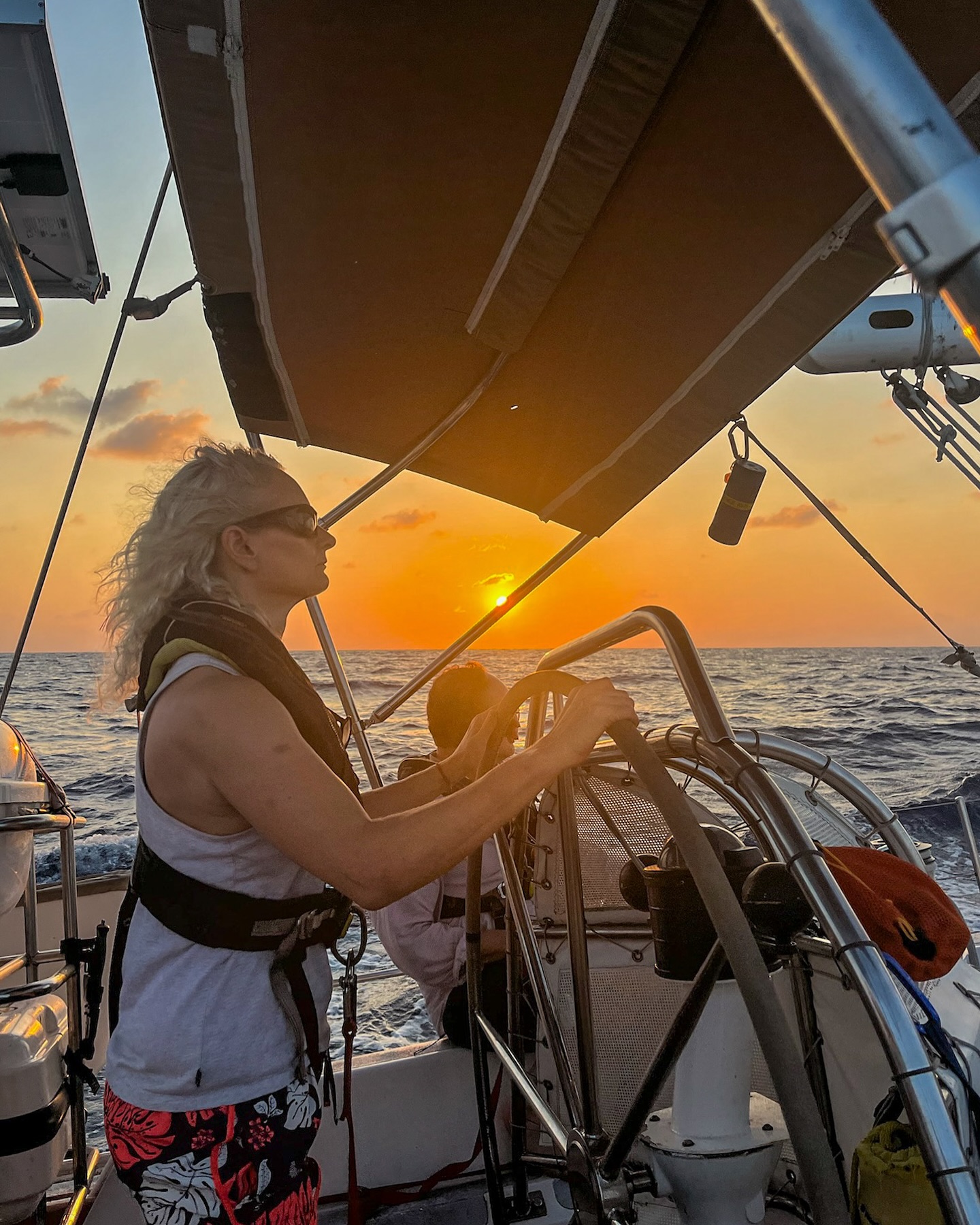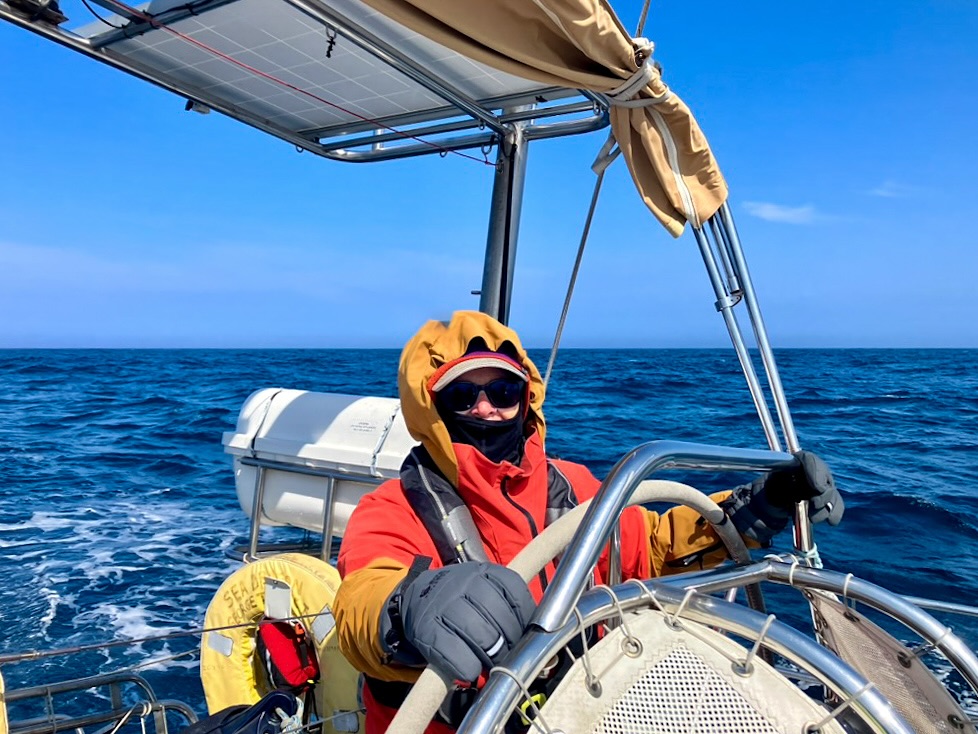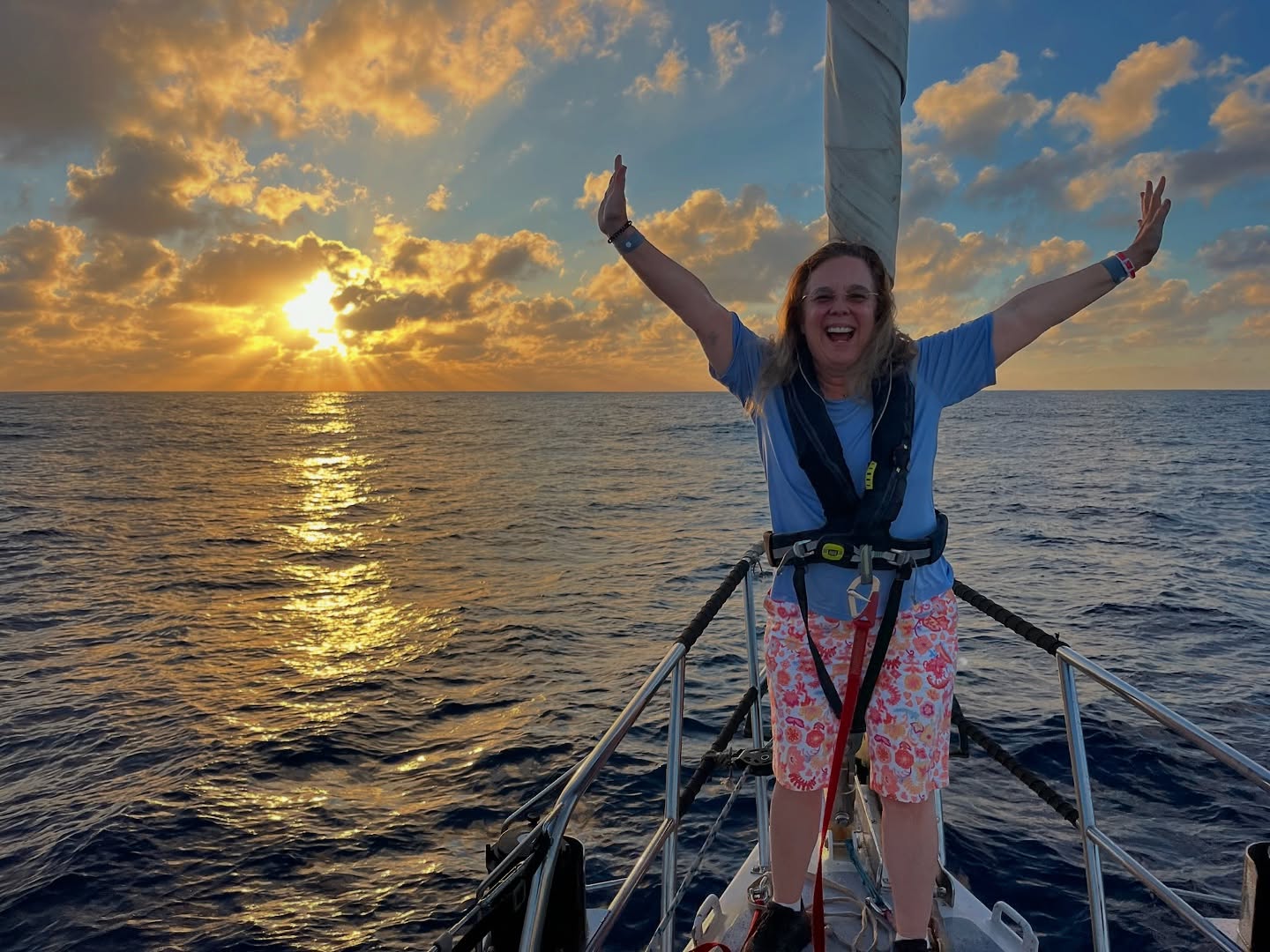1,002 nautical miles. That’s how far we traveled without using a drop of fuel. A steady trade-wind breeze, a solid vessel, and a little sailing know-how powered those 1,002 nautical miles.
Here’s some more numbers. 29 meters of coral skeleton drilled. The species we sampled grow roughly 3 millimeters per year. That’s just shy of 10,000 years of coral growth that we drilled through. The longest core that we collected is 120 centimeters, meaning the oldest skeleton we drilled into may be up to 400 years old! And to collect all these samples, we each spent about 20 hours underwater on SCUBA – perhaps a modest number, but remember we are still air-breathing land mammals.
And one more number. 4 new friends, the crew of Sea Dragon. On a boat, there is no personal space. You know where everyone else is, and everyone knows where you are. We do everything together. No secrets, no time alone, no escape. Cram 8 people on a boat for 3 weeks, and it would be no surprise if everyone scattered in opposite directions as soon as we stepped on land. But that’s not what happened. No one wanted it to be over. Our last dinner all together on Curacao was one of my favorite memories of the trip. Thanks captain Eric, first mate Shanley, and deckhands, Mitch and Nicole, for being awesome!
What’s next? Over the coming months, the cores that we collected will go through a CAT scanner at WHOI. Our lab will then begin to piece together how and why the growth of Caribbean corals has changed over time. Ultimately, this will help us understand and predict how Caribbean reefs may fare in the future.

Seeing these contrasts first hand is powerful. If we can learn something about what has driven these changes in the past, and how Caribbean reefs may change in the future, all our hard work is well worth it.
– Tom DeCarlo


























